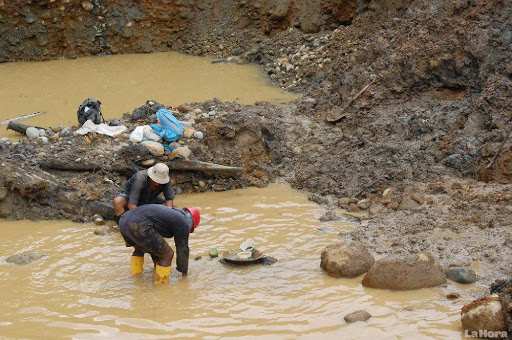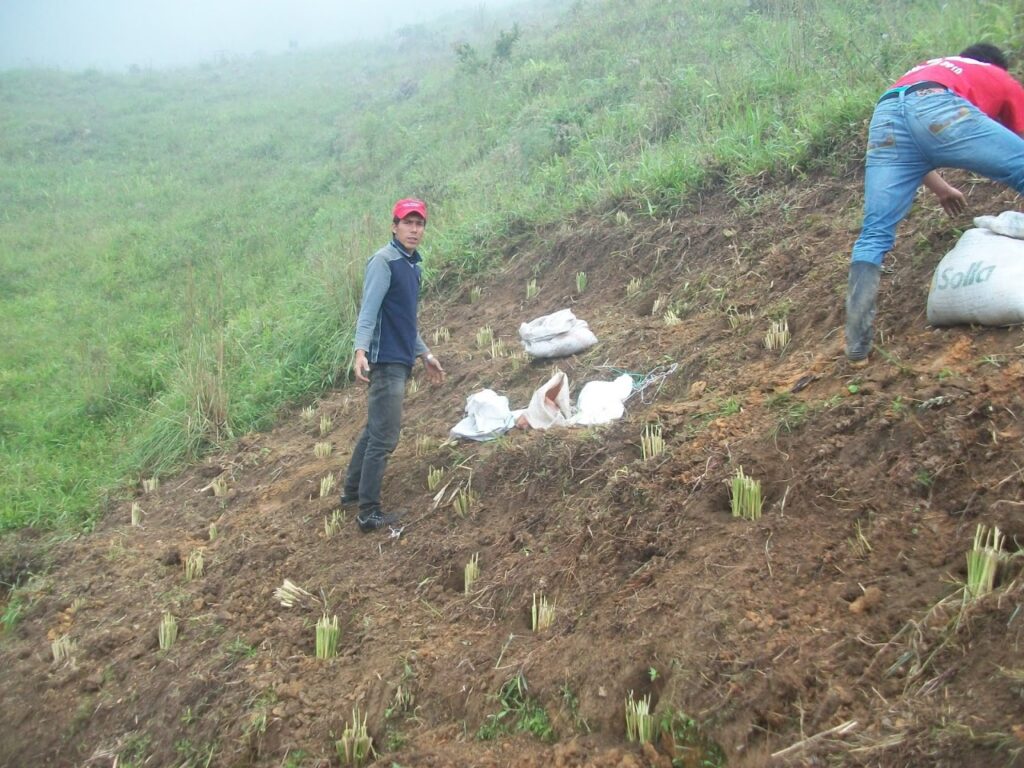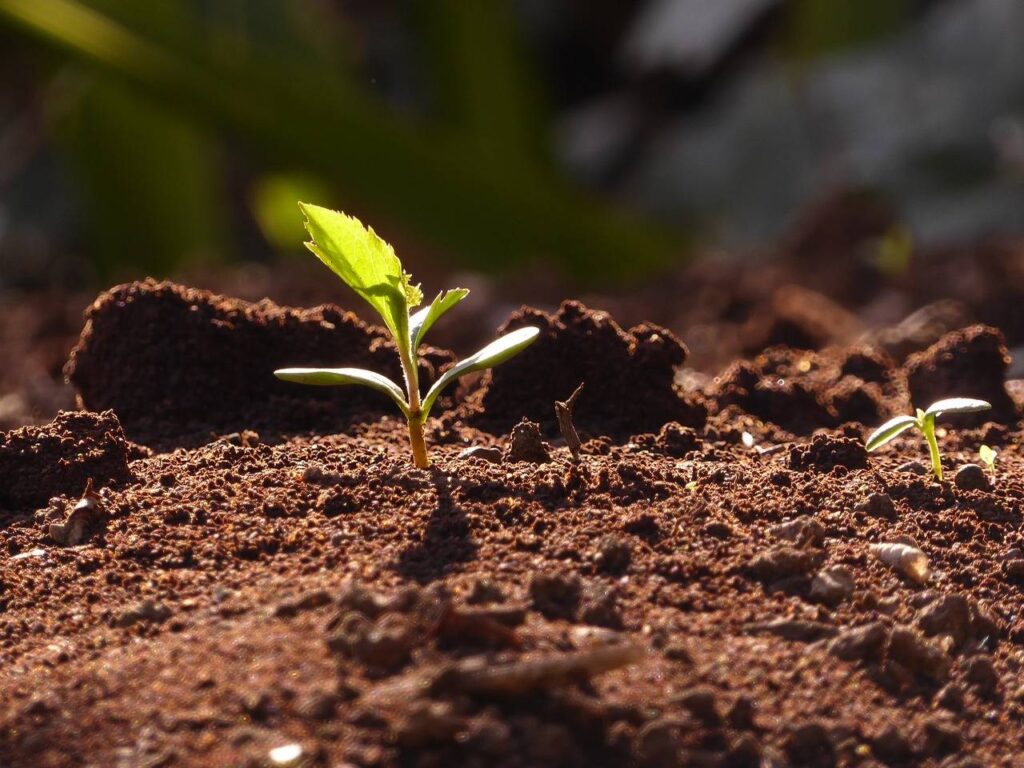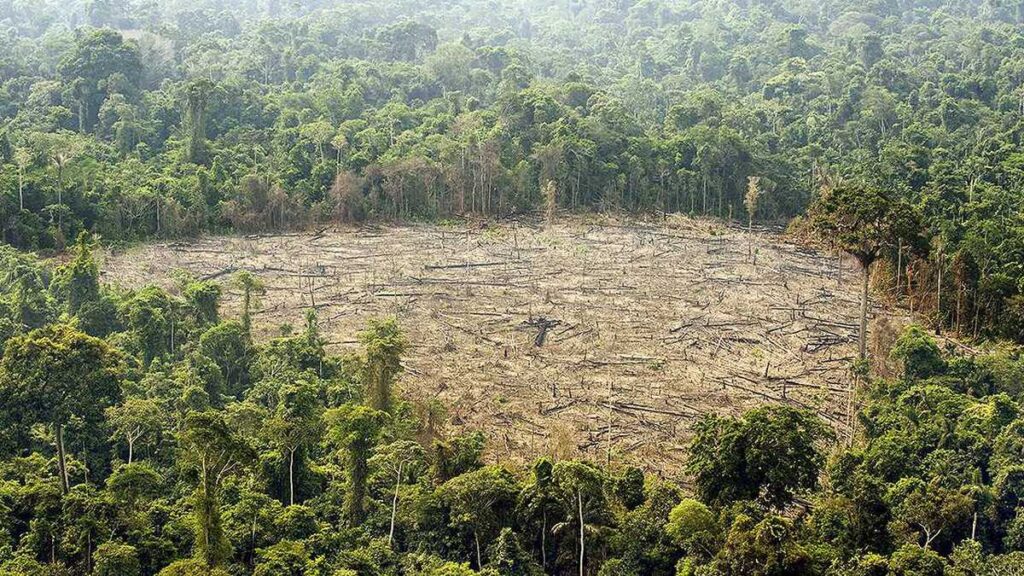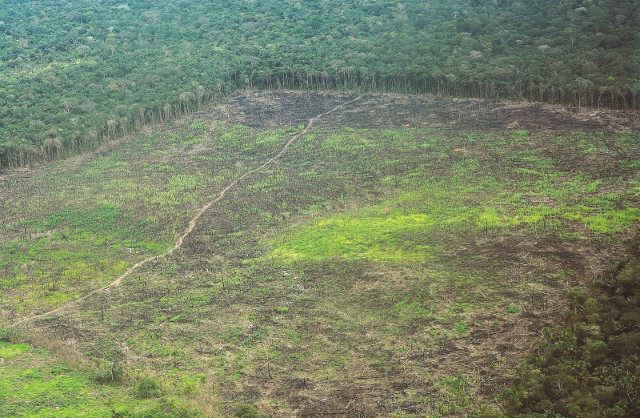ABSTRACT
Phytoremediation consists of the use of plants to remedy in situ soils, sediments, water and air contaminated by organic waste, nutrients or heavy metals, eliminating pollutants from the environment or rendering them harmless.
This work was carried out in natural conditions in the department of the Amazon, in Colombia, from October 2015 to October 2020. Twenty treatments were evaluated with a full factorial design 5 x 4: 5 native Amazonian tree species, in four soils contaminated by metals heavy products of illegal artisanal mining in the Amazon river basin, with polluting loads of 10%, 20%, 30% of mine tailings (RM) and soil without RM. The tree species chosen were: Yarumo (Cecropia peltata), Coctinu (Miconia amazonica), Monteverde (Monteverdia macrocarpa), Caimito (Pouteria caimito) and Amazonian Sauco (Salix humboldtiana).
The highest accumulation efficiency of Mercury, lead and zinc was obtained in the roots of Yarumo (Cecropia peltata) with the treatment of 30% of mine tailings, obtaining 2213.2 mg of mercury kg-1 DM; 2015.1 mg of lead kg-1 DM and 1024.2 mg of cadmium kg-1 DM. The highest accumulation of cadmium was obtained in the roots of Caimito (Pouteria caimito), with a concentration of 1287.3 mg kg-1 DM with the treatment of 30% of mine tailings. Amazonian sauco (Salix humboldtiana) presented the highest tolerance index (IT) to the treatment of 30% mine tailings, with an IT of 41.5%, but Coctinu (Miconia amazonica), Monteverde (Monteverdia macrocarpa) presented the highest IT at the treatment of 20% of mine tailings with IT of 68.5% and 67.9; concluding that these species can be used for the recovery of soils contaminated with heavy metals such as mercury, lead and cadmium, by-products of mining.
Keywords: phytorrestoration; Amazon trees; ecosystems ecosystems of the Amazon; phytostabilization; mine tailings.

